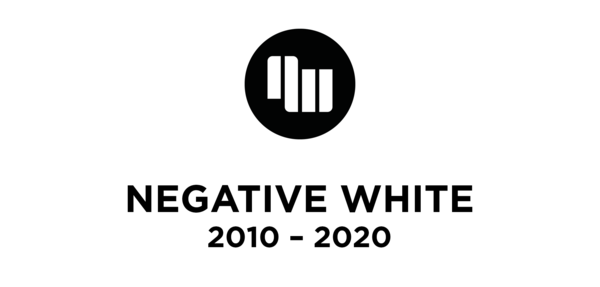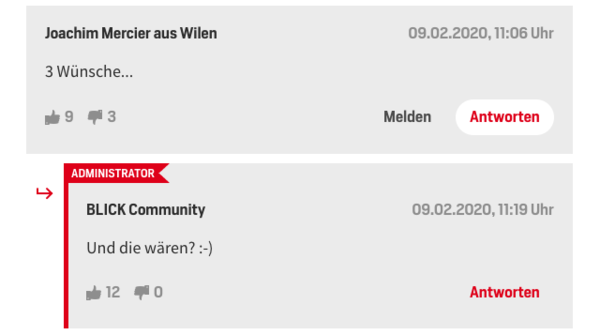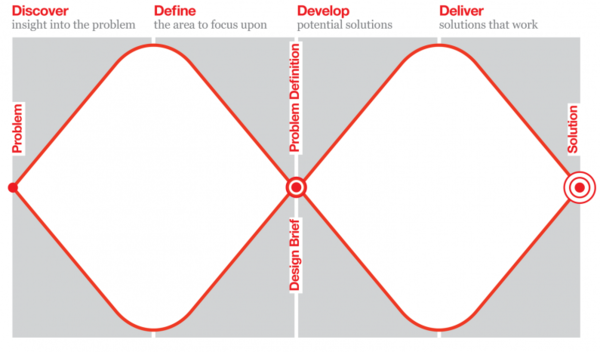Media
The Product Problem of Journalism
Newsrooms are struggling with cultivating a product-driven mindset. Here are some of my thoughts on why this is the case.
I’ve wanted to write another newsletter for quite some time, yet I didn’t find a suitable topic to tackle. Since the last issue, I was heavily occupied with starting as Product Owner of blick.ch.
Additionally to the official certification, I also exchanged with other POs in the media industry. In the process, I realized that many colleagues are struggling with the same issues.
I also remembered an insightful listicle by Konrad Weber about the missing product-driven mindset in journalism [German].
Weber synthesizes his findings in six key reasons:
Let's talk about trust – but differently
Let’s talk about trust. Argh, I know what you think right now.
Let’s talk about trust.
Argh, I know what you think right now, and I admit: The last three newsletters covered this topic already in some ways. (And yes, I stumbled upon this good TED talk that gives some simple advice on building and rebuilding trust in an organization).
But bare with me for a moment, I want to tell you a little story about trust. And it has nothing to do with work – at least for now.
Back in July, I upgraded some of the components in my PC. It didn’t go smoothly, and I had some troubleshooting to do.
Nevertheless, I was thrilled by the experience; it was a lot of fun. So I continued, bought some cheap parts, and built a second system from scratch.
Simultaneously, I started to follow some tech-related creators on YouTube, like Bitwit, GamersNexus, or Jayztwocents.
As much as I enjoyed and learned from their content, I déformation professionelle kicked in, and I started to analyze their business model.
All of the mentioned channels have the classic pre- and midroll ads provided by YouTube. And every host bakes sponsorships into their videos where the host talks about a service or product. These short segments are somewhat secluded from the video’s main topic.
As a person with a flair for journalistic independence, I came to a surprising realization: Despite these native ads, I still trusted the creators.
And I asked myself:

What's Media Trust?
Currently, I’m writing my master thesis for Hyper Island around media trust. The academic research defines trust as a mechanism in helping people with the risk of an open future like planning or contracts.
Sociologist Niklas Luhmann explained that trust leads to reduced complexity of the future, and the trusting actor (aka the trustee) acts as if the future is limited to only a certain amount of possibilities.
Pretty simple so far, right?
Media trust is a bit different. Professor Bernd Blöbaum identified five antecedents of trust:
- Competence: the perceived skill of an actor to fulfil a task in a specific situation.
- Integrity: the consistency in past actions, a trustworthy communication of actors towards the trustee, and the faith that the trustee has a strong sense of fairness, and its actions are aligned with its promises.
- Benevolence: the trustee’s intention towards the trustor or the motives and interests that motivate action.
- Reputation: the degree to which a trustee can fulfil the expectations of a trustor.
- Symbols: e.g., academic titles, familiar typefaces, and article layouts, as well as rankings, ratings, and recommendations that can quickly be taken into the trustor’s quality assessment since they are transparent and visible.
The Key Factors
Now, let’s take these five indicators and map them to the YouTubers. They are indeed competent and knowledgeable in their space. However, competence is not the key factor in play; neither are symbols nor reputation.
For me, the two decisive antecedents are benevolence and integrity. As I learned more about these two factors, I went back and searched for examples that fall into benevolence and integrity.
One example is the following video by JayzTwoCents. He talks about a sponsor, NordVPN, that got hacked. Interestingly, he also talks about trust. And: He stopped working with NordVPN as he was unhappy about the way the company handled the data breach.
Another instance is a video wholly dedicated to transparency around sponsorship and the business model.
Integrity and benevolence also came into play in a video by GamersNexus, where host Steve is exceptionally candid about a specific company, probably damaging his business relations with them.
In a way, these examples are also symbols of trust as visible statements of transparency. I have limited possibilities as a consumer to judge whether the creators always follow through with their promises.
However, the fact that they talk openly about their business or be frank with companies they might rely on for content and sponsorships builds trust, at least for me.
Learnings From A Decade
What I learned from running an online magazine for ten years.
Hi there, it’s been a long time since the last newsletter. However, I still was shocked that it’s been already three months. Time flew by like a fighter jet, and sometimes I felt like a passive passenger, not a pilot.
The most critical decision in the past months was probably to close down my online magazine Negative White after a decade of voluntary efforts. There are two reasons for the decision:
Increased Workload
By the end of June, I got appointed as product manager for Blick.ch. I’m excited about this tremendous opportunity, and I love to work more on projects, development, and strategy.
However, it adds a ton of mental workload to my already tight schedule as Head of Community and product manager for our newsletters. I felt that I had to re-organize my energy.
Lost Joy
But what really drove the decision was the lack of joy, a general sense of fulfillment in work on Negative White. Sure, there were moments of happiness and success. Nevertheless, the moments when I felt overwhelmed and stressed by the things on my to-do list occurred ever more frequently.
In the very first newsletter issue I sent through Revue, I wrote about three key metrics: joy, relationship, and money. Joy was always the most significant driver for Negative White. Its decrease, therefore, led to the rational consequence: the era had to end. Don’t get me wrong; it was a tough decision nonetheless.

In 2018, I listed some of my learnings that Negative White provided in this newsletter. They’re still valid, but I’d like to offer a synthesized summary here:
Lately, I’ve been thinking a lot about agile development. This year, we’ve been able to deploy a series of new features for our commenting infrastructure. While most of them are invisible to the users, there is one exception: Finally, we’re able to engage in the comment sections clearly labelled as official accounts.

Often, people in the newsroom are staggered about the velocity of new features we manage to release. They tell me about their struggle to get things done. These complaints regularly come from people with a background in journalism. And I think that’s the problem.
Human-centered Storytelling
How Design Thinking improves audiences-driven journalism.
Design Thinking has become a major buzzword in the last few years. It is clear that Design Thinking is not the solution for everything. However, as a human-centred framework that “integrates the needs of people, the possibilities of technology, and the requirements for business success” (Tim Brown), Design Thinking may provide a useful process for public-powered journalism.
In a research paper for my master’s degree in Digital Management at Hyper Island, I explored the ways Design Thinking could be applied in journalism. This article is a comprehensive summary of said paper as well as a start for further discussions and improvements.
Let’s take a look at the Design Thinking process as described by the British Design Council.

It starts with a problem statement. After that, there are four phases visualized by a double diamond:
- Discover: Gaining insights into the problem
- Define: Synthesizing research findings
- Develop: Ideating potential solutions
- Deliver: Implementing a solution that works
Sometimes a fifth phase is added to show that the delivered solution is iterated over and over. Dan Nessler, a Hyper Island alumni and Head of UX at Hinderling Volkart, wrote a comprehensive guide to the Design Thinking process if you want to dig deeper into that topic.
Why should Design Thinking be applied in journalism?
The general definition of journalism may be summarized in three services to society: Information, explanation, and classification. But: “The bulk of news stories get created without the customers (the audience) meaningfully involved in the decisions that shape the product (the story),” writes Jennifer Brandel, CEO of Hearken. Interaction with the “people formerly known as the audience” usually happens after the publication.
However, many studies indicate a positive effect on business success in media companies that engage with their users early on. So it’s quite a paradox that most journalists believe that their work is vital to serving the public interest but are wary of allowing readers to dictate what’s newsworthy. There’s an excellent paper by James G. Robinson about the journalist’s perception of their readers.
Today, journalism is competing in the rambling attention economy of the internet. The competitors are not only other publishers but social media platforms as well. It is, therefore, essential to attract attention by focusing on people’s needs. Also, the world is getting more interconnected, and humanity tackles complex problems. A focus on the readers’ questions helps journalism to fulfil its purpose in society.
Design Thinking can help to achieve a higher engaged community and erase the gut feeling about interests and relevance by actively including the readers in the process. However, this does not conclude that the readers will make every decision. In terms of journalism, the newsroom still can decide but always with the reader in mind. The success stories also show the economic viability of a human-centred storytelling approach. The publishers are struggling with financial sustainability. Therefore, it is crucial to focus the resources at hand on the people’s needs.
Moreover, a loyal audience is vital for business success, whether the publisher bets on ad revenue, memberships, contributions, or subscriptions.
Introducing the Human-centered Storytelling framework
Keeping the readers in mind has already become a habit in many newsrooms. However, the idea of including them in the editorial process feels worrisome and abstract to the reporters I interviewed for the research paper.